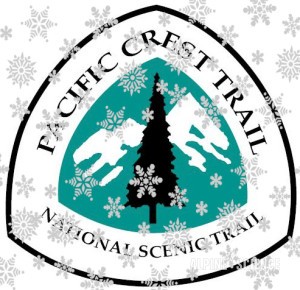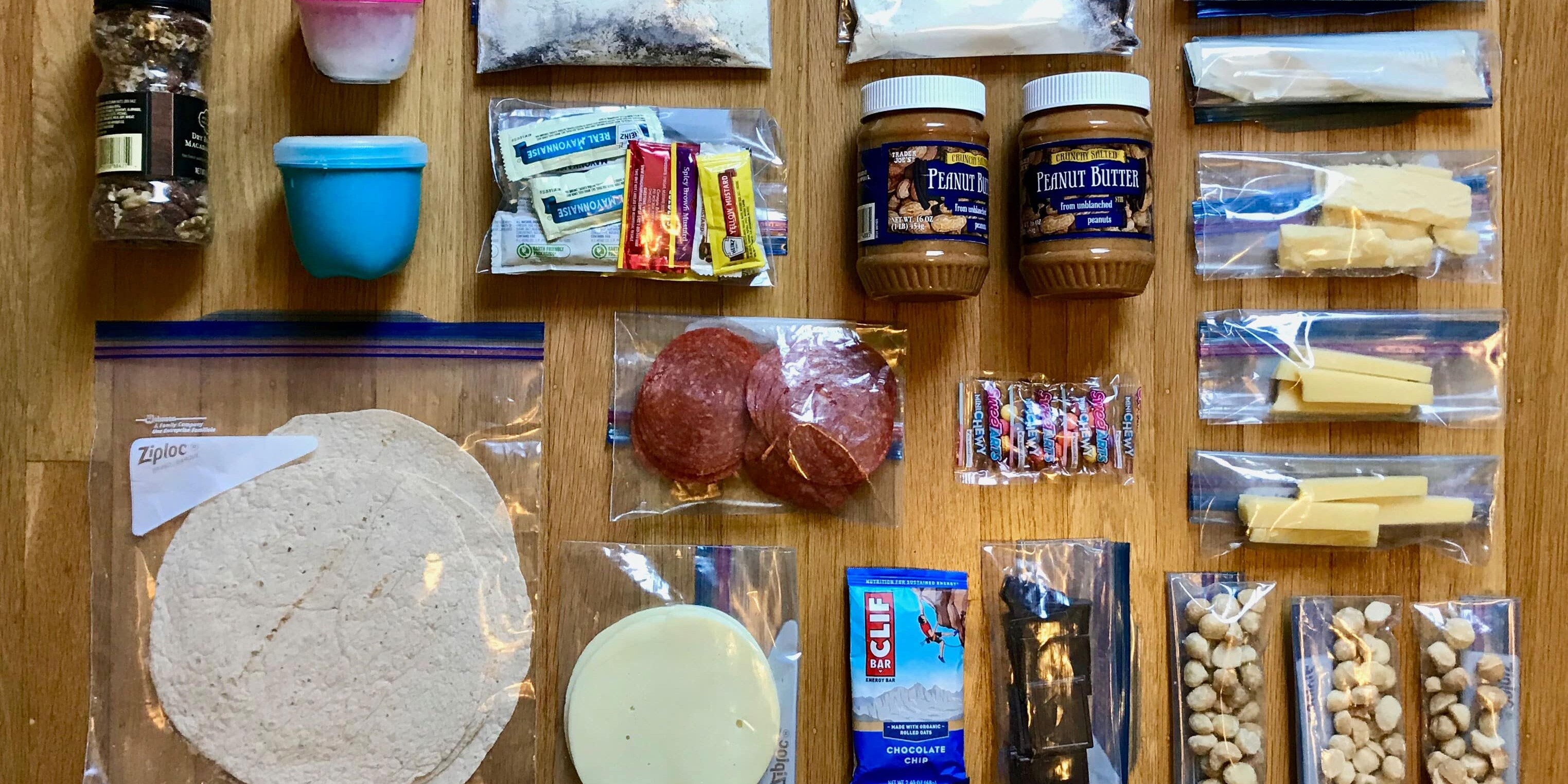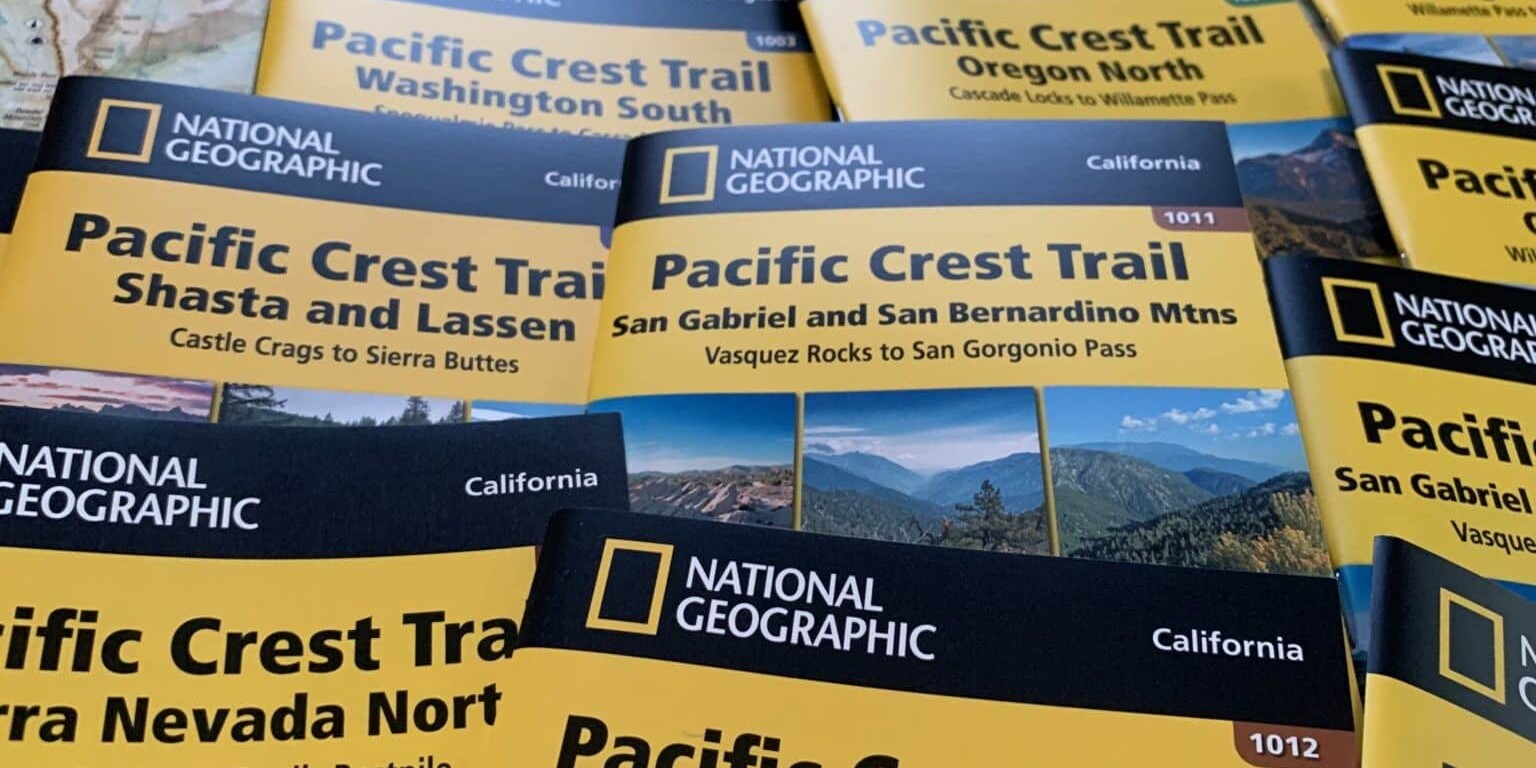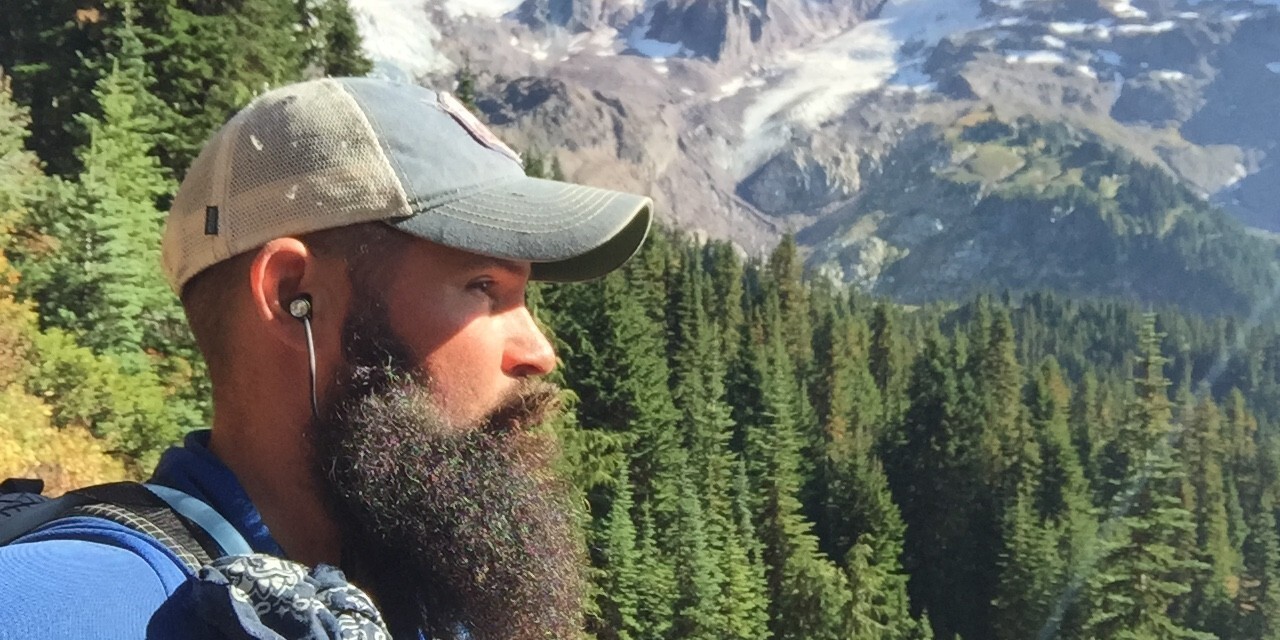The following is information was provided by Ned Tibbits, of Mountain Education, a leading snow school for PCT thru hikers and backpackers alike.
Yearly weather patterns in regard to snow on the PCT determine how much snow thru-hikers will
PCT Snow Travel Basics
 Over-snow navigation can be challenging, especially below tree line!
Over-snow navigation can be challenging, especially below tree line!- Slip-and-falls are common on crusty snow surfaces in the morning, so bring traction aides and a self-arrest pole called a Whippet to stop your tumbles,
- Before the thaw, the snow is nice and smooth and hard all day because of the shorter and cooler days, so no need for snowshoes,
- Before the thaw, the creeks may be completely covered with snow, so you can simply walk over them (please inspect all snow bridges for soundness before crossing! This may last until mid-May).
- Ascents and descents are still on hard snow, so you’ll have easy switchbacking up on hiking crampons (until everybody makes a trough, then Microspikes will do just fine) and fantastic glissades down!
- “The Thaw” (starts about mid-May) causes the snow to stop freezing at night such that it is soft most of the day and that means Postholing! Snow bridges collapse and suncups grow deep,
- During the thaw the creeks get huge, fast, and deep making for dangerous crossings,
- During the thaw, ascents must be done very early in the day while the snow is sort of hard-ish which is good for footing and so that your descents can avoid soft snow issues like postholing and you can have glorious glissades all the way down.
PCT Snow Travel Strategy
Sierra early-entry resupply strategy can definitely be more “original” (the way we had to do it in the ’70s!) or challenging, but not a problem. It will probably involve more road walking, too. So let me lay out an option for you to consider:
Premises:
1. You wanted to start early because you want to go “slower,” yet get to Canada before first snows around mid-September.
2. You know that by entering early, the usual resupply locations like VVR, MTR, and Red’s are probably closed, so you’ll have to utilize other less convenient locations.
3. You realize that after even a normal winter’s snowfall, you will be walking on snow from 10,000 feet and up, meaning you’ll have lots of miles of slow and cautious, but absolutely stunning, snow hiking, so you don’t expect to do more than 10-14 miles per day between Cottonwood and Sonora.
4. With all that effort and exertion, you expect to be eating like a ravenous pig, so you’ll be carrying lots of delicious food and will need to resupply more frequently.
PCT Sierra Nevada and SEKI Resupply Options
1. Your first resupply should be at Kennedy Meadows.
2. Horseshoe Meadows may still be closed due to snow, so this is your road walk to Lone Pine. From this exit north you will have snow, thus 1mph and double the food!
3. Kearsarge Pass to the Onion Valley trailhead (TH) is always open, pretty, steep, and a great way out to Independence.
4. Bishop Pass is another reliable, open, and beautiful route out to South Lake and the town of Bishop. Consider contacting Parcher’s Resort at the TH for overnight accommodations or Resupply assistance.
5. Mono Pass is another way out.
6. Mammoth Pass takes you into the town of Mammoth Lakes.
7. Tioga Pass is a road walk down to the town of Lee Vining, if highway 120 is still closed when you get there.
8. Sonora Pass is home free!
Yes, less convenient, but through one of the two most awesomely beautiful areas of the whole trail, it works for those who desire to slowly soak it all up, then cruise through the less scenic sections to catch up to schedule!
http://www.pcta.org/discover-the-trail/backcountry-basics/snow/
Trace
#Love, backpacking, bass music, burning man, animal protein and dogs. <3





